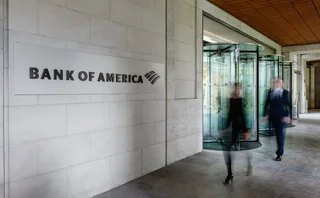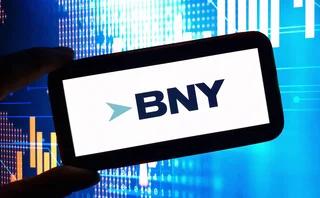
Banks counter IAS39 threat
Banks are developing new structuring models for corporate clients to ensure the IAS39 accounting standards do not result in a reduction of complex foreign exchange hedging activity, Risk 's sister publication FXWeek reports.
"It's more difficult to get hedge accounting for exotic derivatives than vanilla," said Botha. "Either we come up with tailored solutions that comply with the IAS39 standards, or people live with the resultant earnings volatility. Some people believe the standard may discourage them from using exotics."
Corporate clients wanting to use any type of derivative instrument to hedge under IAS39 must first prove that there is an identifiable underlying exposure that needs to be hedged. Once the hedge has been designated, the client must test its effectiveness based on historical pricing levels and forward-looking simulation levels.
"After you've entered the trade you then have to re-check and re-assess whether this effectiveness still holds, and you do that every time you have to report your financials to the investor community," said Lutfey Siddiqi, global head of structuring at Barclays Capital in London.
This represents a new challenge to banks, since the structurers' role has expanded. However, although this proves more work for forex structurers and sales dealers, it could also work in banks' favour as a key area where they can differentiate themselves from their rivals. "We make suggestions about the likely accounting treatment of our proposed structures. We also provide arguments that may be made to allow particular derivatives to qualify for hedge accounting when at first glance they may not look like they are hedge compliant," said Siddiqi. "There are proprietary models that we have and other banks are also looking into it."
Only users who have a paid subscription or are part of a corporate subscription are able to print or copy content.
To access these options, along with all other subscription benefits, please contact info@risk.net or view our subscription options here: http://subscriptions.risk.net/subscribe
You are currently unable to print this content. Please contact info@risk.net to find out more.
You are currently unable to copy this content. Please contact info@risk.net to find out more.
Copyright Infopro Digital Limited. All rights reserved.
As outlined in our terms and conditions, https://www.infopro-digital.com/terms-and-conditions/subscriptions/ (point 2.4), printing is limited to a single copy.
If you would like to purchase additional rights please email info@risk.net
Copyright Infopro Digital Limited. All rights reserved.
You may share this content using our article tools. As outlined in our terms and conditions, https://www.infopro-digital.com/terms-and-conditions/subscriptions/ (clause 2.4), an Authorised User may only make one copy of the materials for their own personal use. You must also comply with the restrictions in clause 2.5.
If you would like to purchase additional rights please email info@risk.net
More on People
Nomura shuffles risk methodology team
Epperlein takes advisory role six months after Japanese bank’s FRTB IMA go-live
Andy Ross leaves StanChart
CurveGlobal veteran confirms his departure as bank’s global head of prime brokerage
People moves: BofA’s new markets heads, Barclays takes SG’s Mastrangelo, and more
Latest job changes across the industry
People: BNY taps Nasdaq CRO for enterprise risk role, Hoornweg steers StanChart CIB solo, and more
Latest job changes across the industry
People: Nomura’s rates rebuild continues, DB USA’s new CEO, and more
Latest job changes across the industry
JP Morgan’s credit structuring head departs
Denis Gardrat will head infrastructure investor Rivage Investment’s UK unit
UBS sterling rates head joins RBC Capital Markets
Ian Hale joins the Canadian bank as head of European inflation trading
People: Rates revamp at Nomura, JP’s structuring shuffle
Latest job changes across the industry







